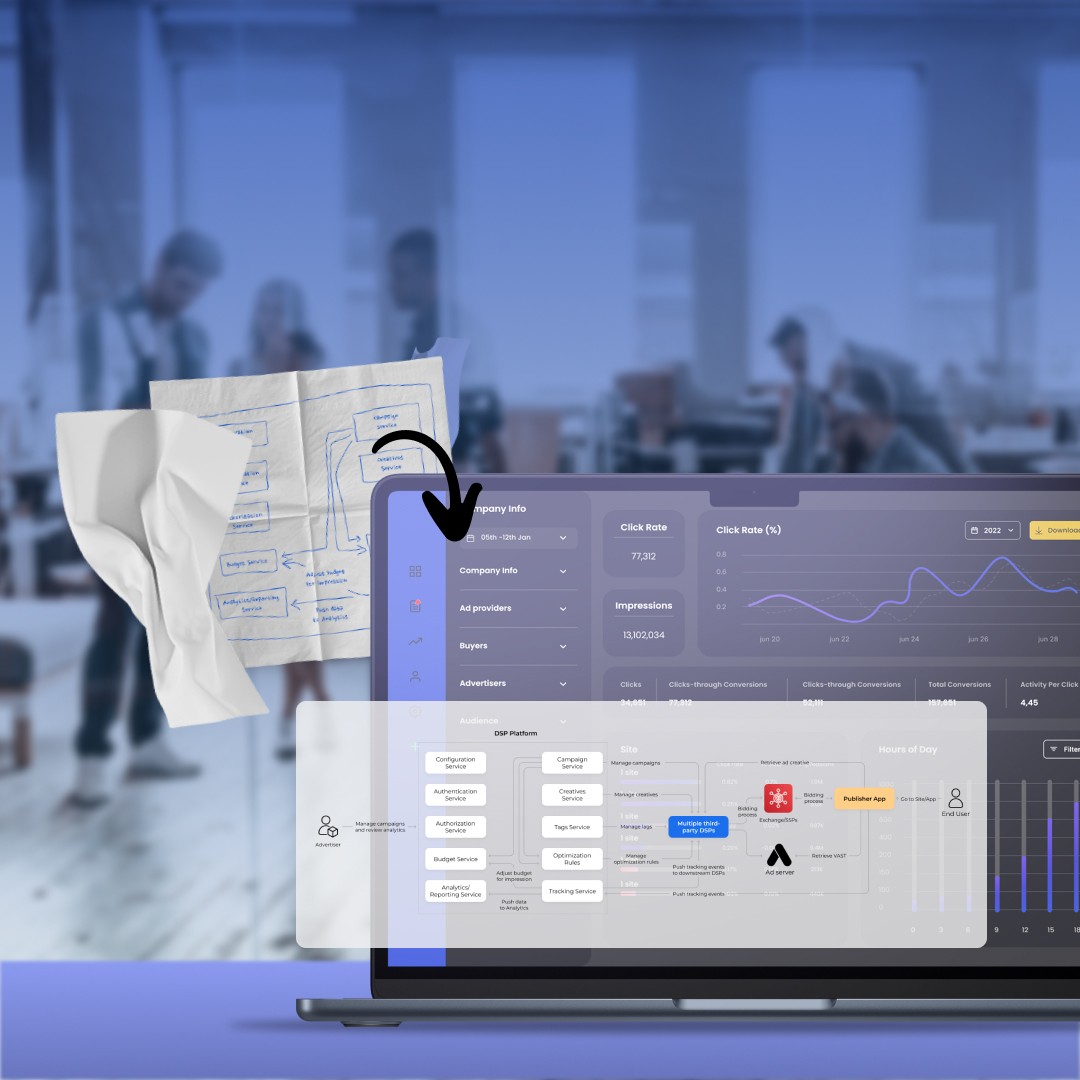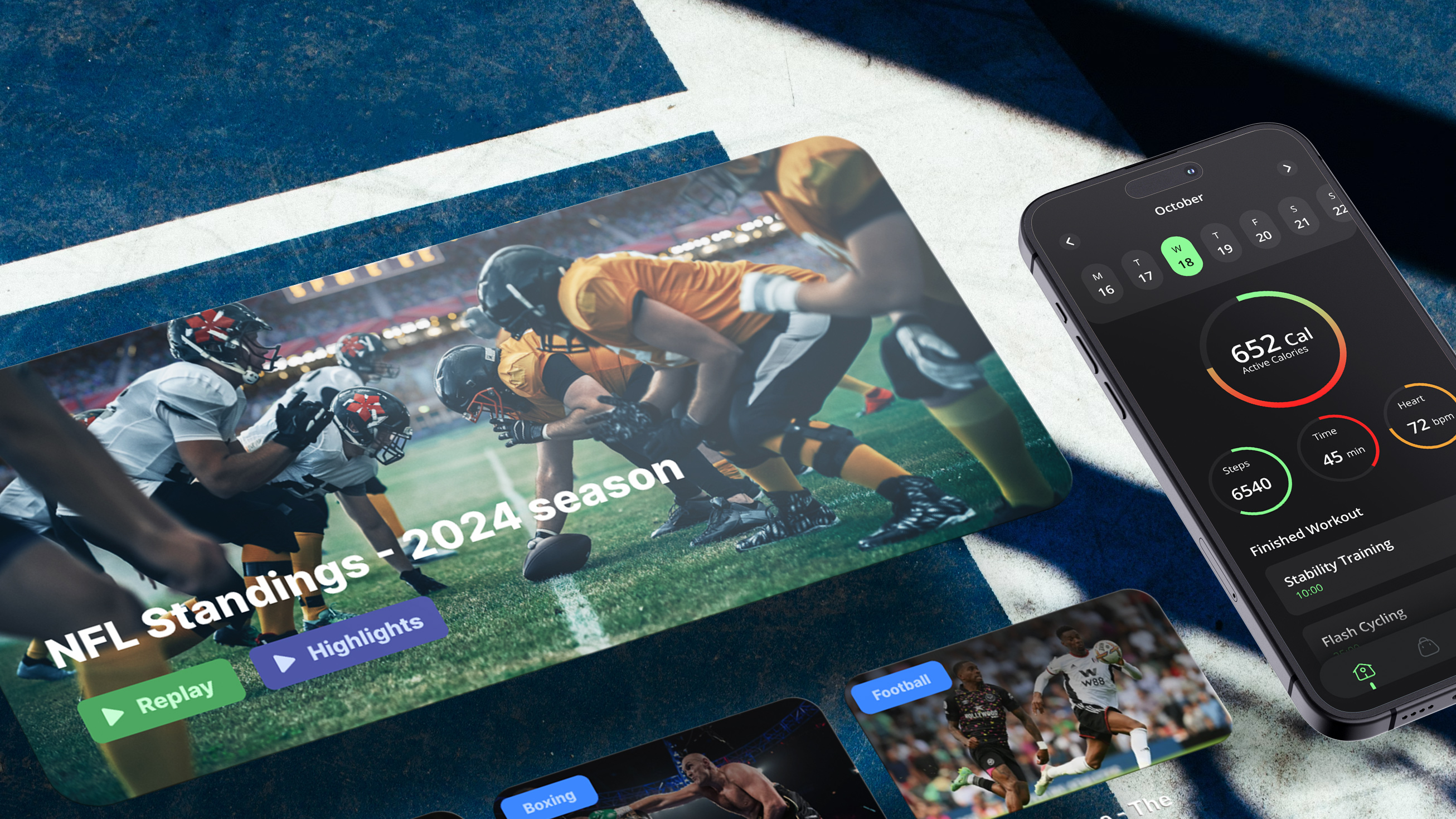Once you’ve decided that OVP delivery is to become part of your OVP digital marketing strategy or business, choosing the right online video platform to do the job is a challenging task. Most OVPs provide more or less similar features while using different technologies to enable them. And since you want a platform that best supports your business model, these differences can be a big deal.
To avoid pitfalls when making a decision, you need to see a bigger picture: where are you going with all that video? This post focuses on the major questions you should ask yourself before you sit down with vendor representatives to discuss the technicalities.
What business goals do you want to achieve with video?
As you will have to prove the project’s value to decision-makers, you need to make a strong case for video’s ability to help achieve your organization’s goals. You can only brainstorm your way out of it. And what’s good, by doing so you might come up with a bunch of fresh ideas on how to get extra value from your videos. Some of the possible goals for your video marketing strategy may be:
- Increasing brand awareness
- Improving SEO
- Boosting conversions and sales
- Building trust
- Reaching out to mobile users
- Boosting online engagement
- Powering e-mail campaigns
- Monetizing (if video is your business)
- Supporting product onboarding and customer self-service
- Enhancing internal communications and employee training
- Personalizing user journeys through AI-driven content delivery
- Strengthening omnichannel presence as part of your broader OVP marketing or OVP digital marketing strategy

Each of the goals will ultimately shape your approach to creating and delivering video to your audiences. From here, a lot of questions will pop up in your mind. And the more, the better. Remember, what we are doing here is getting you into the brainstorming mindset. Here are the questions you might ask yourself:
To support our video marketing goals…
- Are we going to create live or on-demand content, or both?
- Do we want to let our audiences create content? If yes, what devices are they going to use?
- Might we have several distributed content teams on board? How do we ensure the consistency of content they will be creating?
- Who is going to review and edit the content in alignment with our brand vision?
- How will we segment our video content for different funnel stages — awareness, consideration, conversion, and retention?
- Do we intend to integrate video across paid campaigns, landing pages, e-commerce, and sales enablement workflows?
- Will we need localization, subtitles, or dubbing to support multi-regional campaigns?
- How might we use automation or AI tools to accelerate video production at scale?
This is just the tip of the iceberg, but hopefully you’ve grasped the idea of where your curious mind should be heading.
Who are your audiences, and what do they need?
Don’t take it for a good old cliché wisdom, because we’re talking about knowing your audiences from the standpoint of their video and information needs. Here are some of the questions that will help you know more about your viewers:
- What are the demographics of our audiences? Where do our viewers come from? What’s their age/gender/income/education?
- What are the psychographics of our audiences? What are their values, interests, lifestyles, etc.?
- What devices are they using?
- How are these devices going to evolve over time?
- How can we help them learn more about our products/services?
When digging your viewer personas, you may, for example, find out that some of your audiences want to watch 8K video, and not all platforms support 8K video delivery. Or you may discover that the majority of your user-generated content is likely to come from mobile, and not all platforms support mobile upload. You may also have specific requirements for web accessibility, which also varies from platform to platform.
See how these little details are already shaping your choice?
- Do we serve different audience segments, such as customers, employees, or partners, with different expectations for video format, tone, or access control?
- Are our viewers consuming content on connected TVs, mobile apps, social feeds, or embedded players and does our platform need to optimize playback across all of them?
- How do we account for bandwidth variability, subtitle needs, or assistive technology usage in different regions?
- Do our OVP video experiences need to be personalized or adaptive based on viewer behavior, location, or past interactions?
- Are younger viewers expecting short-form vertical content, while enterprise audiences prefer longer structured formats?
By understanding these nuances early, you can align your OVP selection with actual consumption habits and deliver more effective video distribution across touchpoints.
Does the OVP fit your infrastructure?
To maximize the ROI on video, the OVP should be aligned with the marketing, sales, training and other workflows in your organization. You should also think carefully of the existing software that you might want to integrate your OVP with. Here are several hint questions for you:
- Does the OVP support our CMS/LMS/MAP/CRM?
- Can our CMS/website ensure stable and consistent viewing experiences?
- Are we likely to use any third-party audience measurement solutions? Does the OVP support integrations with them?
- How do we take advantage of all that viewership data we will be collecting? Do we want to combine it with the insights from our CRM?
- Does the platform support cloud-native infrastructure and containerized deployment, or is it a closed, monolithic system?
- Can we connect the OVP to our existing MarTech stack, including DAMs, CDPs, and campaign management tools — to power consistent OVP marketing and OVP distribution flows?
- Are there open APIs or SDKs that allow us to automate publishing, tagging, and syncing across platforms?
- Do we need real-time sync between our OVP and internal systems — such as HR tools for internal video, or e-commerce for product videos?
- Can video data be enriched with external sources or sent to analytics platforms for advanced segmentation, cohort tracking, or attribution?
- How easily can we control access, permissions, and content governance across multiple departments or regional teams?
An ideal platform should not just “play video” — it should connect with how your organization works, how your audiences interact, and how your content flows across systems.
How will you measure video success and ROI?
If your OVP marketing strategy is built on performance, you’ll need solid, actionable analytics. Just counting views won’t cut it, you need to know whether your video content is actually driving outcomes.
Start with the basics:
- What KPIs truly matter — views, watch time, click-throughs, conversions, retention?
- Are you optimizing for reach, engagement, lead generation, or revenue?
- How soon do you need access to this data — in real time, hourly, daily, or post-campaign?
Next, consider how analytics will integrate with your larger marketing and sales systems:
- Can video performance data be funneled into your CRM or MAP for nurturing and scoring leads?
- Is there support for custom events or tagging to track in-video actions like clicks, form fills, or CTA completions?
- Do you plan to A/B test video content or thumbnails across different audiences and devices?
- Can you run attribution modeling to connect video consumption with sales or pipeline outcomes?
For internal content, the metrics might be different — completion rates, employee feedback, or training certification status. Make sure the platform can surface those insights clearly.
The right OVP should give you full visibility into how video is performing across your funnel and let you iterate continuously. Whether you’re doing ovOVPistribution for brand awareness or high-intent product demos, measurement is what separates assumptions from results.
Can the OVP scale with your growth and evolving use cases?
What works for your current team or campaign might not hold up when you expand into new regions, channels, or lines of business. A good OVP should grow with you technically, operationally, and economically.

Ask yourself:
- Can we manage multiple brands, user roles, or content libraries within the same platform?
- Does the OVP support modular workflows so we can adapt processes for different teams or markets?
- Will the licensing model scale fairly as usage grows, or will it lock us into a steep price curve?
- Can we add features like live streaming, OTT app distribution, or AI-powered personalization without switching platforms?
- Does the vendor have a roadmap that aligns with where we’re going, whether that’s shoppable video, gamified content, or in-video data collection?
Scalability is not just about handling more viewers. It’s about flexibility: adapting to new goals, new users, and new ways of working without starting over every time.
How secure and compliant is the platform?
Video content is a powerful asset and a potential liability if not handled properly. Especially in regulated industries, internal communications, or any use case involving user data, you’ll need strong privacy and governance controls.
Ask yourself:
- What standards does the platform comply with — GDPR, CCPA, HIPAA, SOC 2?
- Is content encrypted at rest and in transit? Is DRM available for premium or sensitive content?
- Can we set role-based access controls and audit logs to track who did what, and when?
- Does the OVP support enterprise-grade authentication, like SSO or MFA?
- What happens if a private video is shared externally? Is there dynamic watermarking or viewing restrictions?
Security and compliance aren’t optional anymore — they’re essential building blocks of responsible OVP video delivery, especially at scale.
How flexible is the OVP for customization and future integrations?

Not all platforms are created equal: some are rigid and closed, while others let you build, extend, and innovate freely. The more control and flexibility you have, the better you can align the OVP to your business model.
Consider these points:
- Does the OVP offer open APIs, webhooks, or SDKs to support automation and third-party integrations?
- Can you fully customize the player (layout, branding, behavior, interactivity) without sacrificing performance?
- Does it support plugins or modular add-ons, like quiz overlays, in-video forms, or recommendation engines?
- Can developers access clear documentation and sandbox environments for experimentation?
- How fast can you deploy updates or new workflows without vendor dependency?
A future-ready OVP should feel like a platform, not a product. One that fits into your architecture, grows with your stack, and empowers you to build whatever’s next.
Putting it all together
Once you’ve explored these seven questions, from business goals and audience needs to infrastructure, security, and scalability, you’ll have a well-rounded understanding of what your ideal OVP should look like. This clarity will help you evaluate vendor offerings with confidence, ask the right questions during demos, and avoid costly missteps down the road.
We have also created a white paper that can help you get even more prepared for numerous e-mails, calls and meetings with vendors’ sales reps. It breaks down and compares the service offerings of the market’s leading OVP providers — Kaltura, Brightcove, and Ooyala — in relation to the entire OVP distribution pipeline from ingestion to analytics.
With the help of this white paper and the self-survey we laid down in this post, you can evaluate the candidate offerings against your specific needs and filter out the ones that are irrelevant to your goals right away.
Choosing the right online video platform is no longer just about uploading and playing content. It’s about finding a strategic partner for your entire OVP marketing journey, from distribution to engagement, from security to scale. The better your questions, the better your decision.

























